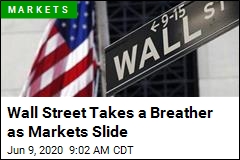Friends, let’s cut to the chase: Japanese government bonds (JGBs) are surging, and it’s not just about Japan. It’s a direct response to the lingering specter of global trade wars, specifically the Trump administration’s tariff threats. The latest delay – pushing the 50% tariff on EU imports to July 9th – is a holding pattern, not a resolution, and the market knows it.
This isn’t simply a “buy bonds” moment; it’s a flashing warning sign. The flattening of the JGB yield curve – with long-dated yields falling much faster than shorter-dated ones – is telling us something profound about investor sentiment.
Here’s a little financial anatomy for you: A flattening yield curve typically signals economic pessimism. Investors are betting long-term growth will be slower, leading to lower future interest rates. It’s a classic risk-off move.
Let’s break that down a bit further.
Understanding Yield Curves: A yield curve plots the interest rates of bonds with different maturities. A normal curve slopes upwards – longer-term bonds pay higher yields.
Flattening vs. Inversion: When the gap between short- and long-term rates shrinks (flattening), it suggests weakening economic confidence. An inverted curve (short-term rates higher than long-term) is often a recessionary indicator.
The JGB Signal: Today, we saw the 5-year JGB yield slip 1 basis point to 1.020%, while the 40-year yield plunged 7 basis points to 3.480%. That’s a significant move, and it’s driven by flight-to-safety demand.
Basically, investors are bracing for a slowdown. Is this overreaction? Perhaps. But ignoring it would be foolish. Japan, often a bellwether for global risk, is screaming “caution.” Pay attention. This is a time for careful positioning, not reckless abandon. Don’t let short-term gains blind you to the long-term risks brewing beneath the surface.







